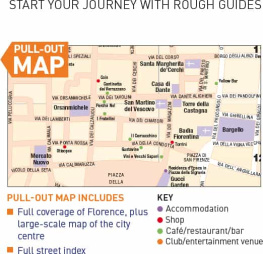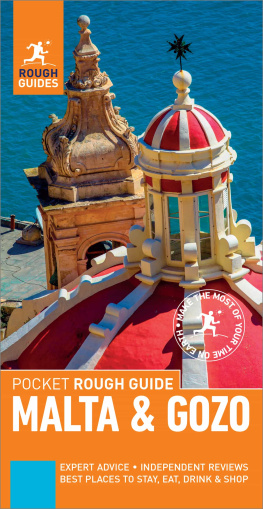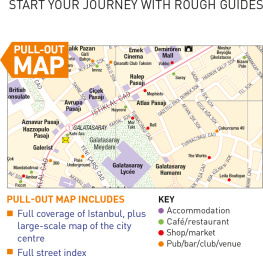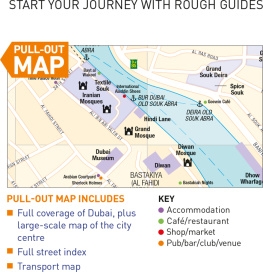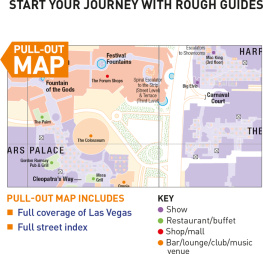CONTENTS

LISBON
Set across a series of hills overlooking the broad estuary of the Rio Tejo (River Tagus), Lisbons stunning location and effortless beauty immediately strike most first-time visitors. Its an instantly likeable place, a big city, with a population of around two million, but one that remains human enough in pace and scale to be easily taken in over a long weekend. That said, many visitors visit again and again, smitten by a combination of old-world charm and cosmopolitan vibrancy that makes it one of Europes most exciting cities.

View of Lisbon from Cristo Rei
iStock
Whats new
Lisbons popularity continues to surge, as do its attractions. , which offers a fascinating insight into the harsh dictatorship of the Salazar regime up until the 1974 revolution.
Although one of the EUs least expensive capitals, Lisbon was once one of the continents wealthiest, controlling a maritime empire that stretched from Brazil to Macau. The iconic Torre de Belm, Mosteiro dos Jernimos and dramatic Moorish castle survive from these times, though many other buildings were destroyed in the Great Earthquake of 1755. Today, much of the historic centre the Baixa, Chiado and Bairro Alto dates from the late eighteenth and nineteenth centuries. The biggest attraction in these quarters is the street life: nothing beats watching the citys comings and goings from a pavement caf over a powerful bica coffee or Portuguese beer.
If youre fit enough to negotiate its hills, Lisbon is a great place to explore on foot: get off the beaten track and youll find atmospheric neighbourhoods sheltering aromatic pastelarias (patisseries), traditional shops, and shuttered houses faced with beautiful azulejo tiles. Getting around by public transport can be fun in itself, whether youre cranking uphill on one of the citys ancient trams, riding a ferry across the Rio Tejo, or speeding across town on the metro, whose stations are decorated with adventurous contemporary art.
Lisbon also boasts excellent museums from the Gulbenkian, with its amazing collection of arts through the ages, to the Berardo, whose modern paintings are the envy of Europe, via the Museu Nacional de Arte Antiga, the national gallery, with top Portuguese and European masterpieces.
Lisbons eclectic nightlife scene ranges from the traditional fado clubs of the Alfama district to glitzy venues in the Bairro Alto and along the riverfront, many of them playing African and Brazilian beats influenced by immigrants from Portugals former colonies.
Elsewhere, the city offers a fascinating mishmash of the traditional and cutting edge: chequered-tiled bars full of old-timers supping brandies adjacent to boutiquey clubs pumping out the latest sounds; tiny tascas with bargain menus scrawled on boards rubbing shoulders with designer restaurants eyeing the latest Michelin awards, and tiny stores that wrap handmade products in paper and string overlooking gleaming shopping malls.
Should city life begin to pall, take the train out to the beautiful hilltop town of Sintra, whose lush wooded heights and royal palaces comprise a UNESCO World Heritage Site. Alternatively, the lively resorts of Estoril and Cascais are just half an hour away, with the best beaches lying south of the city, along the Costa da Caparica, where Atlantic breakers crash on kilometre after kilometre of superb dune-backed sands.
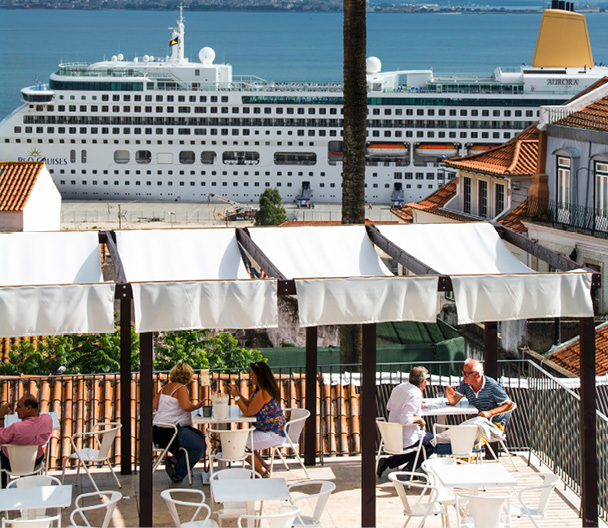
Portas do Sol restaurant
iStock
Best places for alfresco dining
The best way to soak up Lisbons atmosphere is to grab an outdoor table and sit back with a coffee or something more substantial. Sample tapas at .
When to visit
Lisbon is comfortably warm from April to October (average daily temperature 2028C), with cooling Atlantic breezes making it less hot than Mediterranean cities on the same latitude. Most Lisbon residents take their holidays in July and August (2728C), which means that some shops, bars and restaurants close for the period and the local beaches are heaving. Lower temperatures of 2226C mean September and October are good times to visit, as is June, when the city enjoys its main festivals. Even in midwinter it is rarely cold and, as one of Europes sunniest capitals, the sun usually appears at some stage to light up the city.
Where to
Shop
Suburban Lisbon has some of Europes largest shopping malls, but the city centre is a pleasing mixture of quirky local stores and smaller independent outlets. The top end of Avenida da Liberdade features the likes of Armani and Louis Vuitton, while Chiado is the place to head for glass and jewellery. Antique shops cluster round So Bento, Prncipe Real and Campo de Santa Clara, while off-the-wall clothing and accessories are to be found in the independent boutiques of the Bairro Alto. Santos has become the district of design, with several stores dedicated to contemporary jewellery and cutting-edge home products.
OUR FAVOURITES: .
Eat
Youre never far from a restaurant in Lisbon. For diversity, head to the Bairro Alto district where youll find an eclectic array of inexpensive diners alongside ultrahip venues. The Baixa caters to Lisbons workers and has a whole street, Rua das Portas de Santo Anto, largely given over to seafood restaurants. International flavours can be sampled by the Tejo at the Parque das Naes and the dockside developments at Santa Apolnia and Doca de Santo Amaro, while fashionistas head to the cool haunts of Cais do Sodr. Some of the best dining experiences, however, are in local neighbourhood restaurants highlighted in the Guide.
OUR FAVOURITES: .
Drink
The most historic cafs are scattered throughout the Baixa and Chiado districts, where youll find locals getting their caffeine fixes throughout the day. You can also get beer, wine or food at these places, though many bars only open after dark (see below). Portuguese beers largely Sagres and Super Bock are inexpensive and recommended, while local wines are invariably excellent. Worth sampling too are local brandies; the white variety of port, which makes an excellent aperitif; and a powerful cherry brandy called ginginha several bars in the Baixa specialize in the stuff. Finally, dont miss trying a caipirinha, a Brazilian cocktail made from distilled sugar cane, sugar and lime juice.
OUR FAVOURITES: .
Go Out
Lisbon has a pulsating nightlife, with the highest concentration of clubs and bars in the Bairro Alto. Many locals prefer the less frenetic vibe of the Cais do Sodr district, which has a handful of cool clubs and happening bars; while the citys biggest clubs are to be found near the river, especially LuxFrgil near Santa Apolnia and the upmarket venues of Alcntara. There are various excellent live music venues, with the









